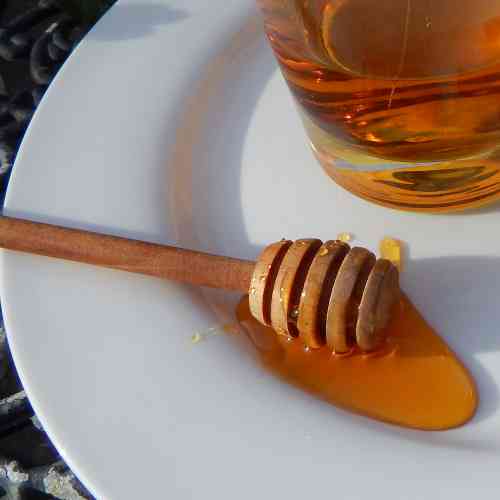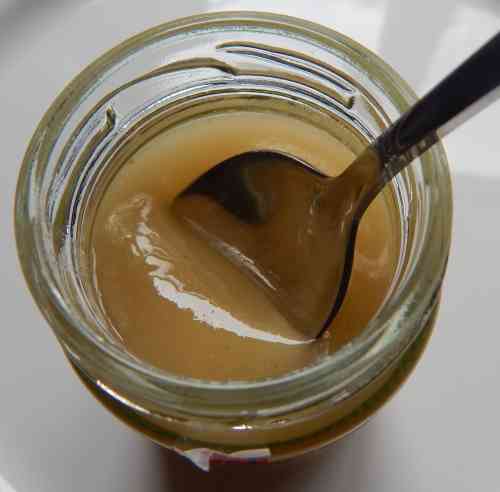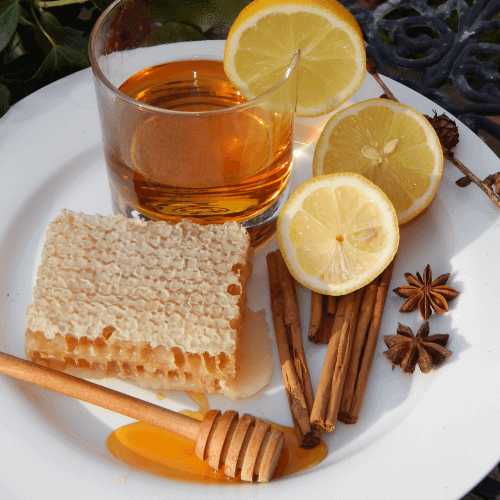What Food Group Is Honey In?
Updated: November 2023
Q: What food group is honey in?
The short answer is:
Across the USA, Canada, UK, Australia, New Zealand and Europe, honey is categorized
as a sugar and a sweetener. As a sugar, it falls into the umbrella group
of ‘carbohydrates’.
Now for further information....
Honey and food group: what kind of food is honey?
People sometimes ask “what food group is honey in?”. This may be due to a general query regarding the
nutritional profile of honey, or it may be due to the urge to seek clarity.
With regard to 'clarity', I have learned there are some peculiar rumors flying around the web (on forums,
for example) regarding honey and how it might be categorized by
regulators.
I think this is worth looking at, after all, the way honey is to be listed and regarded as a food, might influence people’s perceptions of it.
 We know it tastes sweet, but what food group is honey in (officially)?
We know it tastes sweet, but what food group is honey in (officially)?The main nutritional components of honey
I have covered this on my page about honey nutrition but to summarize here, about 82% of honey is composed of carbohydrates – and almost all of this is simple sugars: fructose; sucrose; glucose; maltose.
Honey also contains 18 amino acids in small quantities – but protein constitutes only about 0.3% of the contents of honey.
Honey also contains trace amounts of B vitamins; vitamin C; some minerals such as magnesium, selenium, phosphorus and zinc.
There may be some small differences in the balance of these nutrients, depending on the particular type of honey, and primary sources of nectar (which flowers) from which honey bees gathered nectar to make honey.

What Food Group Is Honey In According To The FDA?
According to US government websites, honey is a ‘nutritive sweetener’, and this is how they define a nutritive sweetener:
Nutritive Sweeteners
Nutritive sweeteners, also known as caloric sweeteners or sugars, provide energy in the form of carbohydrates.
Some sugars are found naturally in foods. For example, fructose is found in fresh fruits.
By eating the whole fruit, you not only consume fructose, but you feed your body fiber, vitamins, minerals, and phytonutrients that you do not get from sugar alone.
They go on to include honey, Agave, high fructose corn syrup, and fructose among nutritive sweeteners. (Non-nutritive sweeteners are zero- or low-calorie alternatives to nutritive sweeteners, and include things like aspartame, saccharin, sucralose and stevia).
Do the FDA classify honey as raw meat?
No.
I was genuinely surprised to discover a peculiar myth that the US FDA classified honey as a raw meat – it does not! There is absolutely no evidence for this at all.
To be clear, the FDA defines honey as:
“a thick, sweet, syrupy substance that bees make as food from the nectar of flowers and store in honeycombs.”
Canadian regulators view of honey
In Canada, honey is classified as a sugar-based ingredient because it is a sweetening agent. To quote the relevant Canadian government authorities:
'Examples of sweetening agents include fancy molasses, maple syrup, brown sugar, agave syrup, refined sugar syrup, honey, and other syrup....'
and
Honey falls under the definition of a sugars-based ingredient because it is considered a sweetening agent.
As such, when honey is used in multi-ingredient foods such as candies and biscuits, honey is required to be grouped in parentheses following the term "Sugars" in the list of ingredients and placed in descending order relative to the other ingredients in the product [B.01.008.3(1) and (2), FDR].
As such, when honey forms part of the ingredient list for a product (such as a cake), then it will be listed among ‘sugars’:
As per section B.01.001(1) of the FDR, honey is considered a sweetening agent as it is listed in Division 18 of the FDR. Although single-ingredient products like honey are exempt from displaying a list of ingredients, if one is voluntarily included on the label, honey packaged and sold as such is exempt from being declared in parentheses following the term “Sugars” in the list of ingredients [B.01.008.3(4)(a), FDR].
Resources
- Proper Labeling of Honey and Honey Products: Guidance for Industry
- Government of Canada Labelling Requirements For Honey
- https://www.nal.usda.gov/fnic/nutritive-and-nonnutritive-sweetener-resources
- https://www.fda.gov/media/110846/downloadhttps://www.inspection.gc.ca/food-label-requirements/labelling/industry/honey/eng/1392907854578/1392907941975?chap=3
- https://www.inspection.gc.ca/food-label-requirements/labelling/industry/list-of-ingredients-and-allergens/eng/1383612857522/1383612932341?chap=2#s6c2
- https://www.inspection.gc.ca/food-label-requirements/labelling/industry/list-of-ingredients-and-allergens/eng/1383612857522/1383612932341?chap=7#s17c7
If you found this page helpful or interesting, I'd really be grateful if you would share it with others - if not this page, perhaps another, such as Gardening For Bees.
Thank you so much :) .

